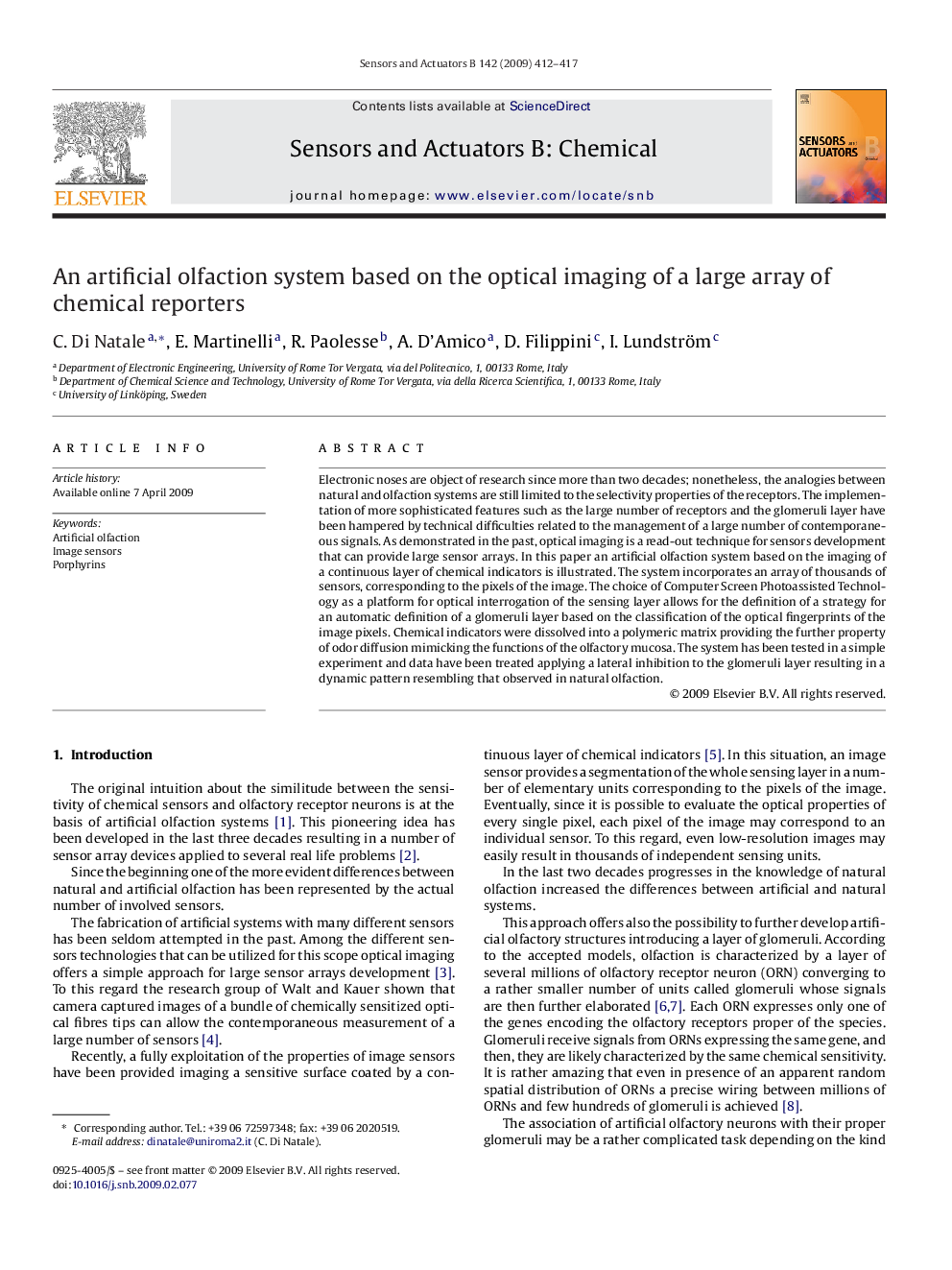| Article ID | Journal | Published Year | Pages | File Type |
|---|---|---|---|---|
| 741061 | Sensors and Actuators B: Chemical | 2009 | 6 Pages |
Electronic noses are object of research since more than two decades; nonetheless, the analogies between natural and olfaction systems are still limited to the selectivity properties of the receptors. The implementation of more sophisticated features such as the large number of receptors and the glomeruli layer have been hampered by technical difficulties related to the management of a large number of contemporaneous signals. As demonstrated in the past, optical imaging is a read-out technique for sensors development that can provide large sensor arrays. In this paper an artificial olfaction system based on the imaging of a continuous layer of chemical indicators is illustrated. The system incorporates an array of thousands of sensors, corresponding to the pixels of the image. The choice of Computer Screen Photoassisted Technology as a platform for optical interrogation of the sensing layer allows for the definition of a strategy for an automatic definition of a glomeruli layer based on the classification of the optical fingerprints of the image pixels. Chemical indicators were dissolved into a polymeric matrix providing the further property of odor diffusion mimicking the functions of the olfactory mucosa. The system has been tested in a simple experiment and data have been treated applying a lateral inhibition to the glomeruli layer resulting in a dynamic pattern resembling that observed in natural olfaction.
